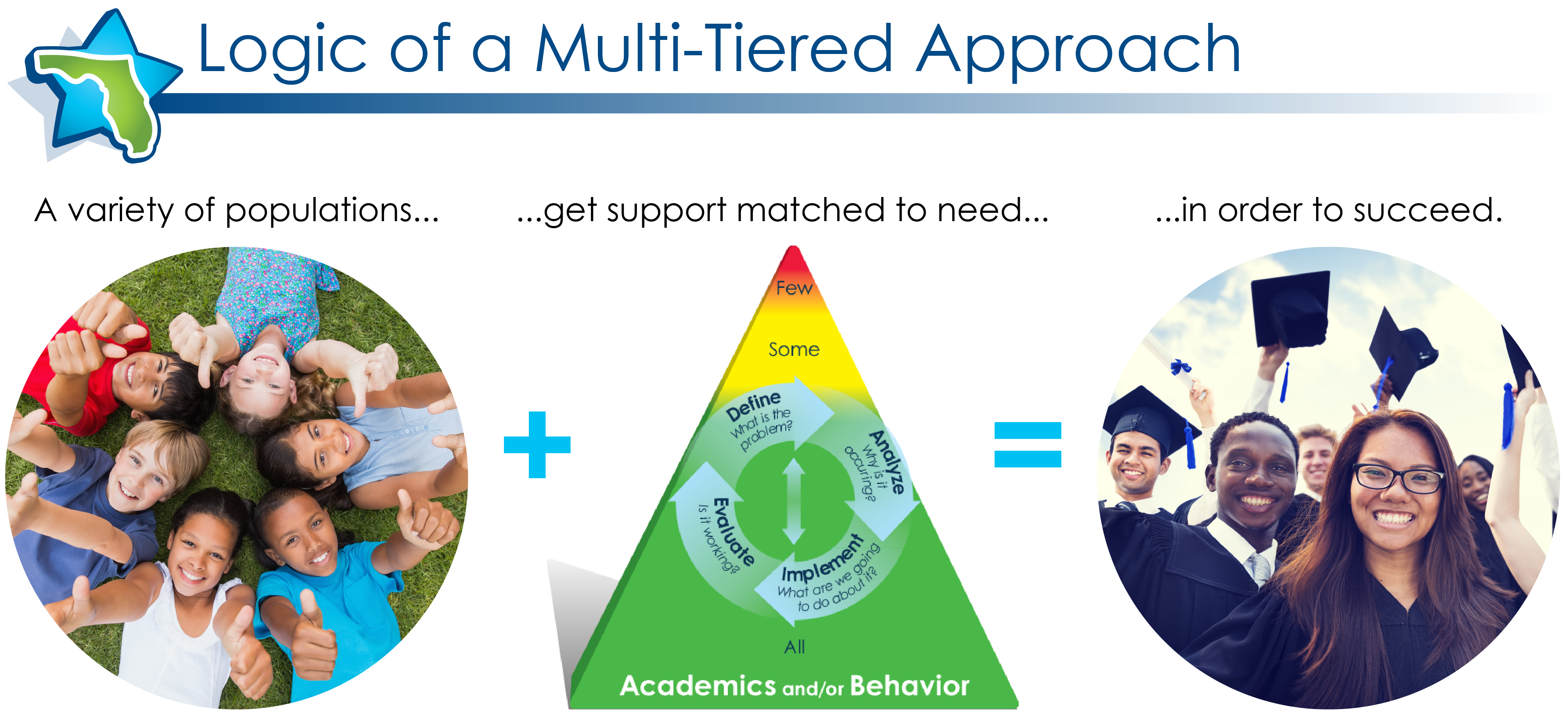Foundations for Implementation
Multi-Tiered System of Supports (MTSS)

A Multi-Tiered System of Supports (MTSS) refers to all of the instructional strategies, interventions, and other resources that are used to help all students achieve. An effective system blends contextually relevant academic and behavior supports to create effective environments that address a range of student needs.
An MTSS makes sure all students are successful by:
- Using data to make smart choices about how to provide instruction and support
- Selecting curricula, instructional strategies and interventions that have a high likelihood of working:
- Reviewing practices to make sure they're effective
- Organizing school and district resources to meet student need
The Critical Components of an MTSS
A multi-tiered system of supports requires effective leadership, communication, capacity building, and data systems. Utilizing a continuous improvement model, district and school-based leaders use data-based problem solving to identify organizational changes to make their MTSS more effective.
This is what students get, and includes:
- Learning standards & behavioral expectations
- Curriculum & instruction practices
- Evidence-based programs & practices
- Integrated achievement & behavior supports
The frequency & intensity of services are matched to student need.
This is how we decide who gets what.
- Structured process used with fidelity
- Relies on collaborative and team-based decision-making
- Effectiveness of decisions is measured by student growth
- Includes decision protocols/decision rules
The frequency & intensity of problem solving is matched to need.
Effective leaders:
- Are actively involved with MTSS implementation
- Share leadership responsibilities
- Organize practices within a tiered framework
- Recognize the importance of fidelity for successful outcomes
- Strategically allocate professional development resources
- Positively influence the culture and climate of the school
- Engage in reciprocal coaching practices with stakeholders
Includes:
- Ongoing, data-driven professional development & coaching
- Professional development matched to educator responsibilities
- Schedules that allow for multiple tiers of instruction/intervention & team-based problem solving
- Established written practices, policies and implementation guidance (e.g., plans)
Effective teaming and communication practices:
- Build & sustain consensus about MTSS
- Build purposeful relationships
- Are transparent & inclusive when reviewing implementation & student data
- Are aligned to stakeholder roles & responsibilities
- Coordinate efficient use of resources
Data-based decision making depends on:
- A data culture that understands that data may be used in multiple ways
- Having consensus on the purpose for using data,
- A “data system” that includes roles & responsibilities for using data (from district to classroom)
- Multiple sources and types of reliable and valid data
- Data summarized in user-friendly manner
- Data summaries that are matched to guiding questions for problem solving
Additional Reading
